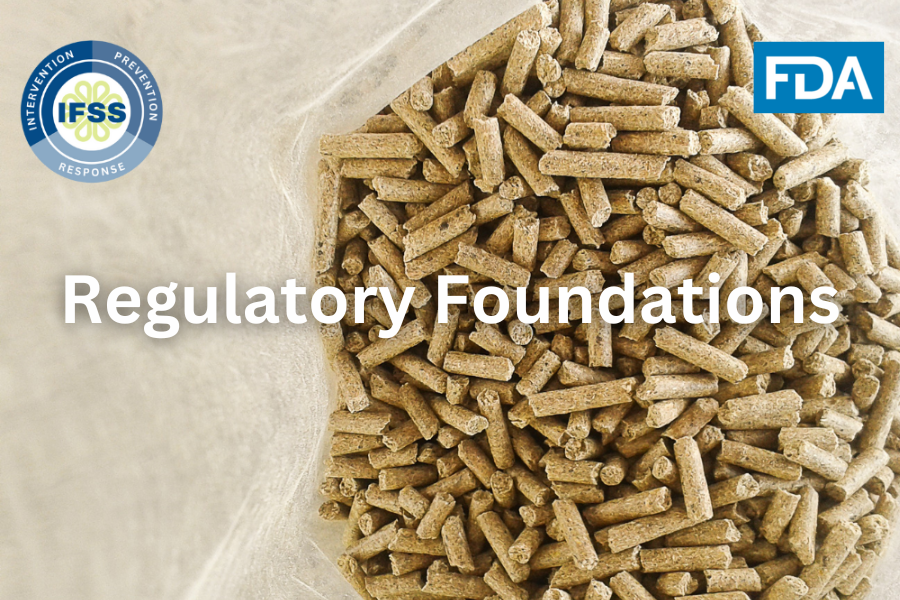IFSS Food Protection Professional NCS
Basic Core
Regulatory Program Foundations
Description: Introductory knowledge, skills, and abilities related to the elements of feed and food regulatory programs.
Topic Areas:
-
Description: Feed and food regulatory program responsibilities.
Terminal Competency:
Discuss feed and food regulatory program responsibilities.
Enabling Competencies:
1. Define relevant terminology.
2. Discuss the public health role of a feed and food regulatory professional.
3. Give examples of historically significant events that have influenced feed and food regulatory programs.
4. Give examples of the basic duties of a feed and food protection professional.
5. Give examples of regulatory compliance actions.
6. Describe the role of education and outreach in a feed and food regulatory program.
7. Discuss the role of critical thinking as a feed and food protection professional.
8. Discuss the role of systems thinking as a feed and food protection professional.
To see a set of behavioral anchors, which provide further detail about the enabling competencies and can be used for assessment against the enabling competencies, contact IFPTI.
-
Description: Regulatory program laws and regulations.
Terminal Competency: Discuss regulatory program laws and regulations.
Enabling Competencies:
1. Describe the differences between acts and regulations.
2. Discuss the legislative process for creating laws.
3. Discuss the administrative process for creating rules.
4. Give examples of the acts and regulations that guide food protection professional activities.
5. Discuss federal law adoption by states.
To see a set of behavioral anchors, which provide further detail about the enabling competencies and can be used for assessment against the enabling competencies, contact IFPTI.
-
Description: Feed and food protection agencies and their interactions.
Terminal Competency:
Discuss feed and food protection agencies and their interactions.
Enabling Competencies:
1. Give examples of federal feed and food regulatory agencies.
2. Give examples of state, territorial, and tribal feed and food regulatory agencies.
3. Give examples of local food regulatory agencies.
4. Give examples of international feed and food regulatory agencies.
5. Discuss the functions at the agencies at various levels of government.
6. Discuss how laboratories support agency regulatory responsibilities.
To see a set of behavioral anchors, which provide further detail about the enabling competencies and can be used for assessment against the enabling competencies, contact IFPTI.
-
Description: Regulatory program standards in an integrated food safety system.
Terminal Competency:
Discuss regulatory program standards in an integrated food safety system.
Enabling Competencies:
1. Explain the purpose of program standards.
2. Identify standards for feed and food regulatory programs.
To see a set of behavioral anchors, which provide further detail about the enabling competencies and can be used for assessment against the enabling competencies, contact IFPTI.
-
Description: Joining feed and food safety resources and authorities at all levels into a unified and coordinated system to ensure the safety of the feed and food supply.
Terminal Competency:
Explain the significance of an integrated food safety system.
Enabling Competencies:
1. Explain the concept of the integrated food safety system.
2. Give examples of feed and food partnerships and alliances within the IFSS.
3. Discuss the farm to fork concept.
4. Discuss the role of feed and food labs within IFSS.
5. Give examples of stakeholders.
To see a set of behavioral anchors, which provide further detail about the enabling competencies and can be used for assessment against the enabling competencies, contact IFPTI.
-
Description: An overview of the interactions of feed and food regulatory agencies.
Terminal Competency:
Explain the significance of mutual reliance.
Enabling Competencies:
1. Give examples of state, local, and tribal cooperative agreements.
2. Discuss mutual reliance for feed and food regulatory activities.
3. Discuss advantages of system recognition.
4. Discuss challenges associated with information sharing between international, federal, state, and local regulatory agencies.
5. Identify types of agreements.
To see a set of behavioral anchors, which provide further detail about the enabling competencies and can be used for assessment against the enabling competencies, contact IFPTI.
Learning Resources:
Assessments:
Coming soon

